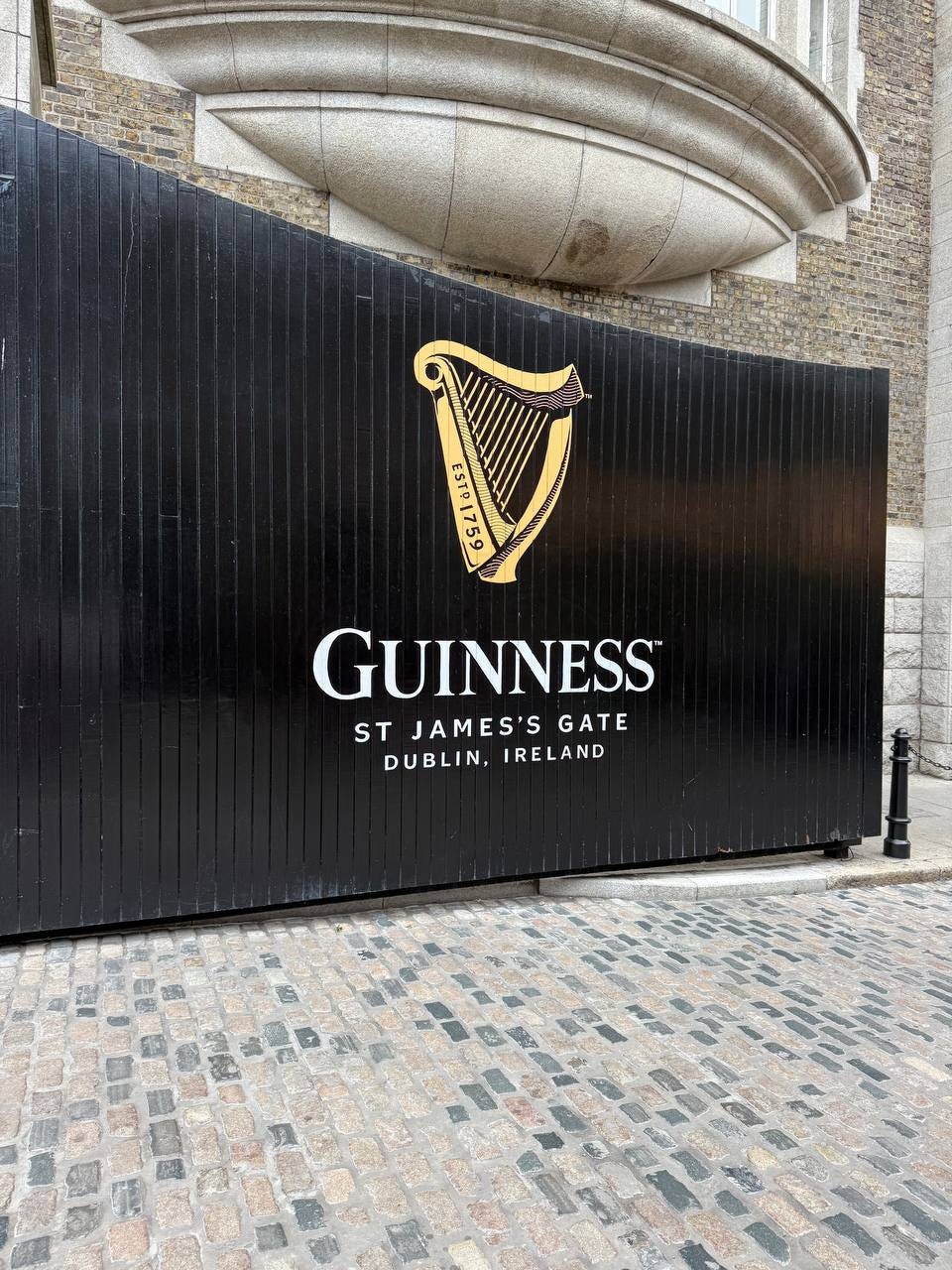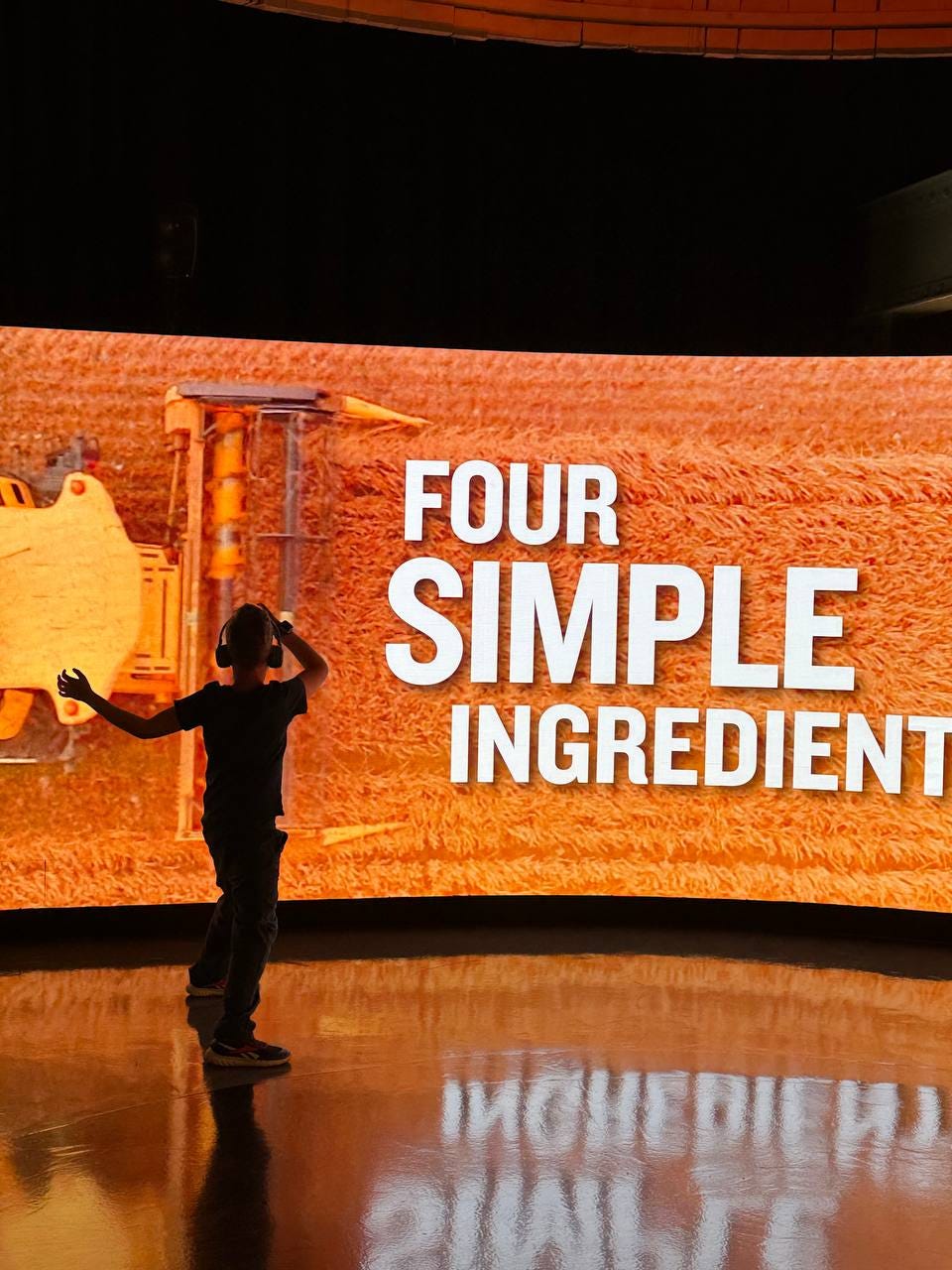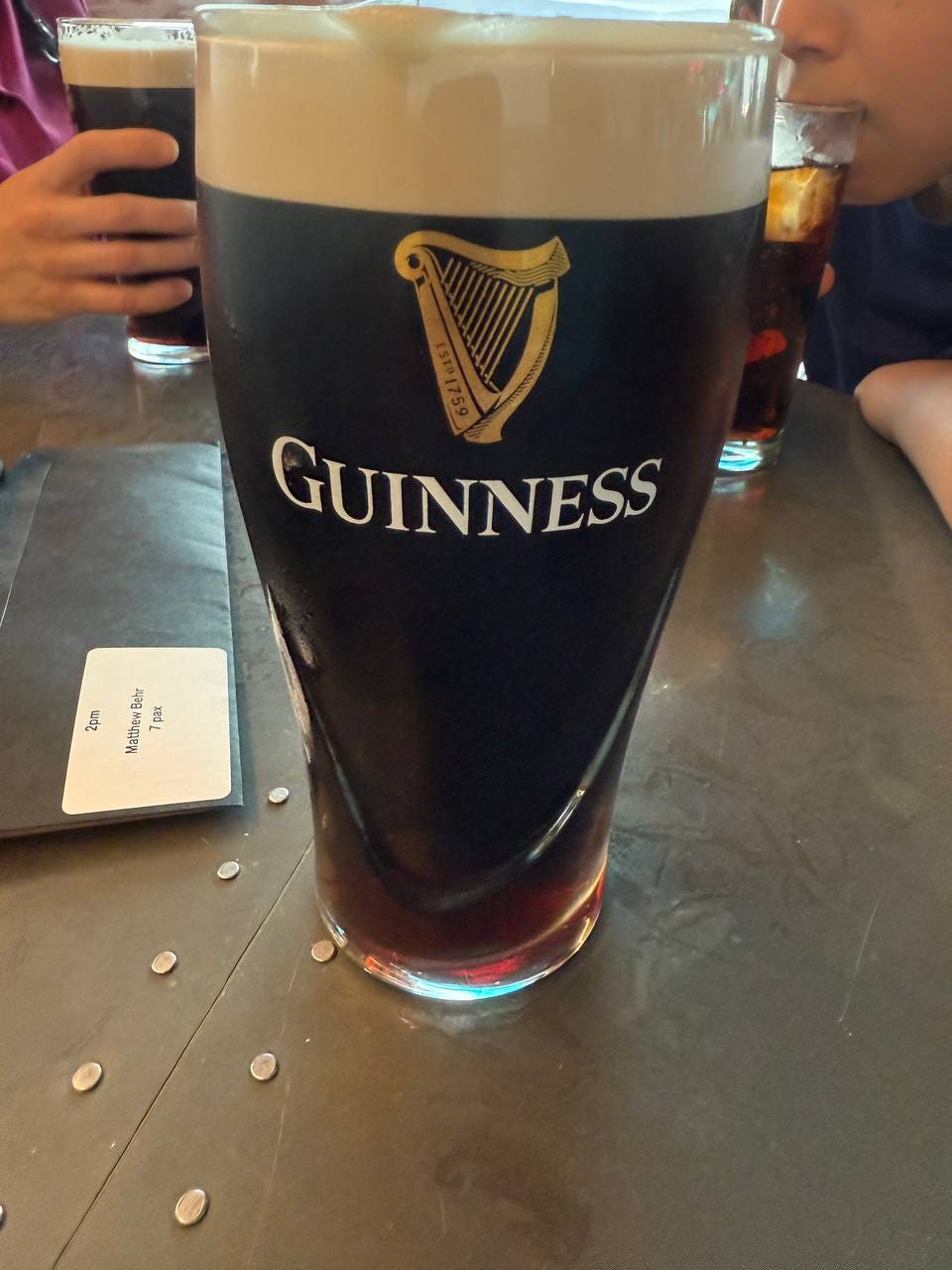What do you think is Ireland's main tourist attraction? The Cliffs of Moher? Something to do with James Joyce? No. It's the Guinness Storehouse, a beer museum that attracts over 1.5 million visitors a year.
I visited the Guinness Storehouse last week and I think I've figured something out about great branding and brand narratives. And about how to build brands that literally get into the bones of the audience. I'll try to explain using the Guinness Storehouse as an example.
What is the Guinness Storehouse?
I’ll start with a brief description of the museum (and show a few photos). It's a seven-story building, with each floor revealing a different aspect of the beer-making process. The first floor is about where the ingredients come from, followed by fermentation, then packaging, ad campaigns, management, a guided tasting, and finally, you get your own pint in the Gravity Bar with a panoramic view of Dublin.
You might think, what's new here? All major brewers have museums with more or less the same content. The difference is that Guinness creates its own Universe and focuses directly on the experience of interacting with its brand.
For example, the museum is totally immersive, engaging every single one of your senses. You can touch real growing malt, see water flowing, smell the aromas of everything (different herbs, yeast, and lots more stuff I don't know about), see hops hanging from the ceiling, touch old barrels, imagine yourself inside a pint of beer, and taste a fresh one. Where it's possible to show something in its natural state, it's shown. If not, illustrative material is provided on huge screens. It all looks really cool!
As a result, you find yourself not in Dublin, not in Ireland, and not in a beer museum for an hour and a half or two hours. You are in the Guinness universe with its mythology, heroes, and rituals - it's an interesting story. And this is where we get to the topic of branding.
How Guinness Shifts the Paradigm from Place to Experience (Universe)
I've been on tours of many factories. As a rule, these tours focus on a specific place (a production facility, an office, a company store). It's as if we're given access to a specific place for a very short time, shown how things work there, and then released. In this case, we passively consume information and leave with new knowledge, without getting an immersive and/or emotional experience.
With its museum, Guinness changes this paradigm. Its approach involves your full immersion in the brand's narrative: from the story of the lake in the Wicklow Mountains (where the water comes from) to meeting the heroes of this Universe (on each floor, there are large portraits of employees with brief information about them). These heroes have their own stories that are told to you: and now you admire the ingenuity of Arthur Guinness, who managed to lease the brewery for 9,000 years for 45 pounds a month (to this day), his obsession with good beer, his rituals, achievements, and his desire to leave a legacy.
What's it all for?
By creating its own narrative, Guinness, as a brand, isn't just telling you something between tastings - it's allowing you to live its story with your senses and become a part of it. This is a completely different level of emotional engagement and loyalty. The visitor doesn't just learn something; they live IT and gain an EXPERIENCE. And at that moment, the person stops being a passive consumer and begins to actively empathize with and become attached to the brand (what it takes to build such an experience will be in the next posts).
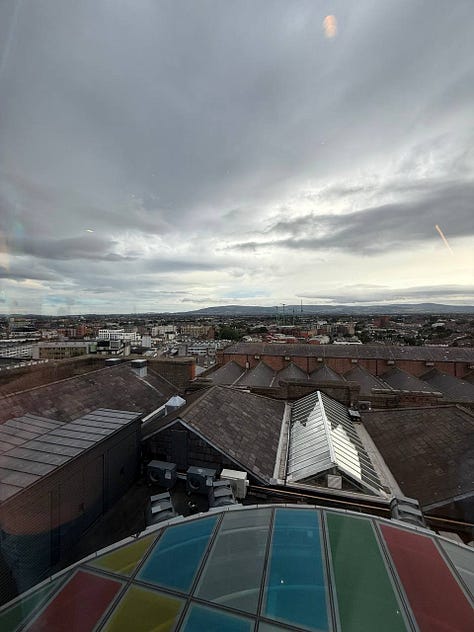
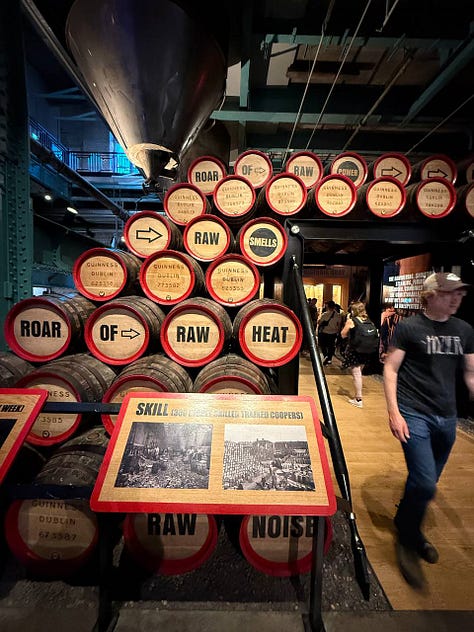
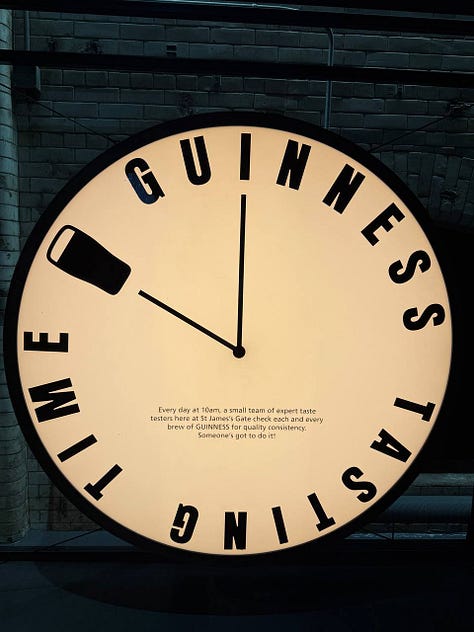

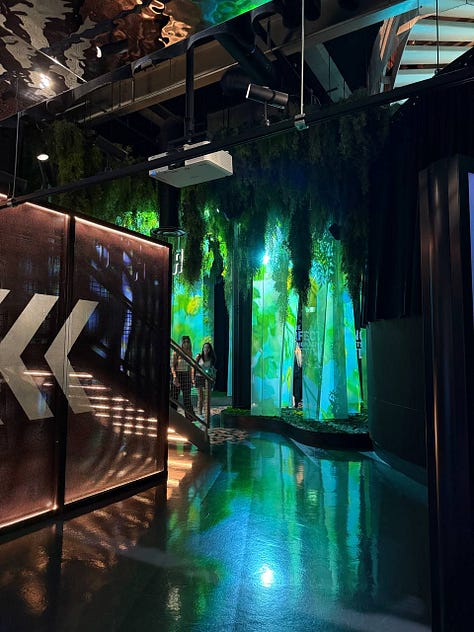
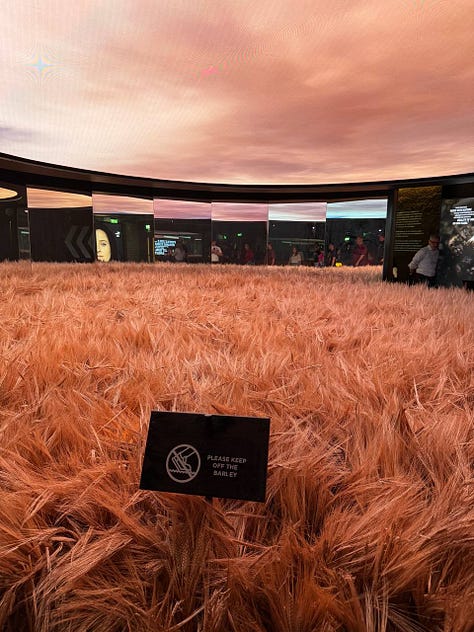
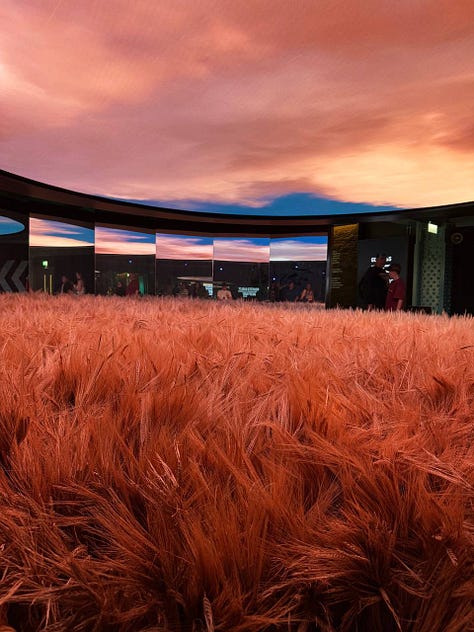
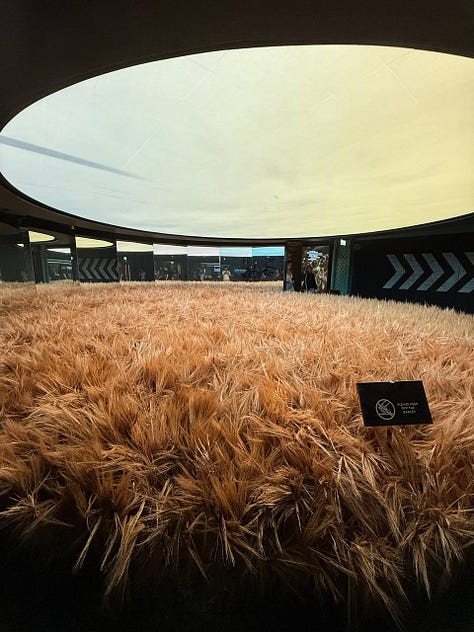

Creating one's own narrative looks very tempting for brands. And many companies are really good at it.
A couple of examples:
Disney: This is probably the most famous example. Disney didn't just create amusement parks; it built universes. Visitors can immerse themselves in the worlds of Star Wars or Avatar. These worlds don't just sell rides; they sell the opportunity to live inside a favorite story. People are willing to spend thousands of dollars and hours in lines to be a part of this narrative (otherwise, they would just go to another park).
Red Bull: The brand doesn't sell a drink; it sells a universe of extreme sports and adrenaline. Red Bull creates content, organizes events, and supports athletes who embody the brand's values. In this case, the drink is just a part of this world, the fuel. And it's often not even the main thing.
LEGO House: This isn't just a store or a museum; it's the "Home of the Brick." LEGO created a space where people can not only look but also create. Here, visitors interact with the bricks and build their own worlds, which supports the brand's mission to inspire future builders.
How to Create Corporate Universes?
First, you need to understand that this is not a one-time advertising campaign and its goal is not to increase sales (an important point that many people refuse to believe). It's about building relationships with people. It's about a full-fledged effort, similar to the one that begins the Bible (though not everyone can create a universe in 6 days). You'll need to do more than just make up a story; you have to design a complete ecosystem and breathe life into it (to rest on the seventh day; I should stop with the biblical metaphors).
What do you need to create such a universe?
The Big Idea. A truly big, truly important, truly an idea. Most companies try to substitute this idea with a regular advertising slogan, which may sound effective but doesn't resonate even with the company's own management (the tired "change the world," for example). A big idea must resonate with people's deep needs and be something the business itself is passionate about. For example, belonging (I will constantly return to the topic of deep needs in this newsletter).
In the Guinness Storehouse example, the big idea is to leave a legacy. The brewing industry is about mass production, efficiency, technology, taste, and so on. Guinness, on the other hand, moves away from this and talks about something more important and eternal (this is also reflected in the brand's ad campaigns, which you'll notice if you study them). They have turned a purely technological process into magic that spans centuries.
Archetypes and characters. Every universe needs heroes. A brand needs to decide who's who in its story. Who is the customer? An explorer, a creator, or a fighter? What about the employees?
Which archetype best suits your brand (I'll write more about archetypes in detail in future newsletters)?
In the Guinness example, the museum visitor is a Hero (or a Seeker) who goes on a journey. At the end of this journey, they get a reward in the form of a pint of Guinness at the Gravity Bar (conquering the summit and all that). The figure of Arthur Guinness himself is the founder and Sage who shares his wisdom.
Mythology and history. Every universe needs its own story. It's a kind of corporate myth about how the brand came into being and what problem it's trying to solve. This story must be rich in detail and evoke an emotional response.
The Guinness Storehouse example: instead of dry facts about the company, the museum tells a "Myth of Origin." Visitors learn about the almost eternal 9,000-year contract. This isn't just a fun fact; it's a narrative that speaks to foresight, stability, and legacy. This fact creates the feeling that Guinness is forever.
Rituals and symbols. A universe won't be alive if it doesn't have its own rituals and symbols.
Guinness has several rituals. The first is the process of pouring the perfect pint. Unlike other beers, Guinness is poured in two stages (due to nitrogen). The process takes about a minute, which is quite a long time. Decades ago, Guinness even played on this in one of its ad campaigns with a slogan like "the best things come to those who wait" (or something like that). This ritual is so important that the museum even holds master classes on how to pour Guinness correctly.
Another ritual is "Guinness Time": every day at 10 am, a special commission gathers at the brewery to taste each new batch of beer.
When it comes to symbols, there's the Harp a symbol of Ireland and the Guinness brand. Its image is everywhere, and it instantly evokes associations with the brand. Black is another symbol that speaks of premium quality, legacy, and style.
Units of Culture. Units of culture are the artifacts of your world. In your universe, every product must have a meaning and a function, helping the customer solve problems or achieve goals.
Beer is just such an artifact, symbolizing Irish heritage, friendship, and celebration. A pint of Guinness becomes the key that unlocks access to this world. A tour of the museum is also a unit of culture that sells not just entry, but an immersive experience.
A Plan for Creating a Brand Universe
Step 1: Research and Discovery
Find your Big Idea: Study the "quirks," contradictions, and non-obvious trends in your industry and in culture as a whole. What seems illogical but is also appealing? What is truly important for you and your audience? (we'll talk about finding a big idea in future newsletters).
Study your audience as heroes: Figure out what drives your customers. What are their dreams, fears, and aspirations? What Big Idea are they already looking for?
Step 2: Creating the Mythology
Write the "myth of origin": Create a story about how your brand came into being to solve a big problem. This can be a non-linear, emotional story.
Develop archetypes: Define what your brand is in this universe (for example, a wizard who gives magic) and who your customer is (for example, a hero who is looking for their calling).
Create a "universe guide": Describe what your world looks like, what places, symbols, and rituals it has. This will be the basis for all your future communications.
Step 3: Implementation and Realization
Create artifacts: Your products and services should be the physical embodiment of your mythology. If you're creating a world of freedom, the product should also give freedom.
Communicate consistently: Use one narrative from your universe across all customer touchpoints - from advertising and packaging to service and promotional content.
Engage all of the audience's senses: As much as possible.
Involve the community: Allow customers to become part of your world and help build it. Create spaces (online and offline) where they can share their stories related to your brand.
By creating a Universe, you'll stop simply selling products and start building a deep and lasting connection with your audience.
If you do everything right, the buyer becomes not just a consumer, but a resident of this world, which increases their loyalty and willingness to stay with you longer.
See you soon!


